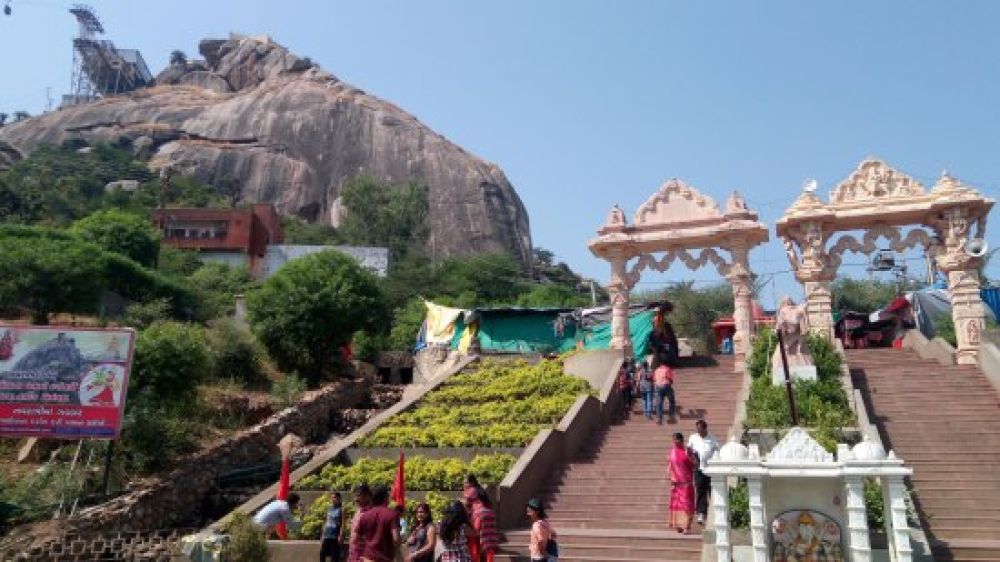

Nestled in the lush landscapes of Gujarat, Gabbar Hill bears immense religious significance and has been a beacon of spirituality for centuries. Historically, the town of Ambaji where Gabbar Hill is situated has been known for its ancient temple of Goddess Amba, a form of the Divine Mother. The temple itself is believed to be one of the original Shakti Peethas, significant shrines and pilgrimage destinations in Shaktism.
Pilgrims have been visiting Gabbar Hill since time immemorial, as it was on this very hill that the heart of Goddess Sati fell, according to interpretations of Hindu texts. The hill is thus revered not just for its natural beauty, but also because it is a testament to divine love and sacrifice. The footprints of Goddess Amba present at the summit serve as a focal point for worshippers and have helped Gabbar Hill become a cornerstone of religious tourism, particularly during the time of Navratri.
The history of tourism in Gabbar Hill has always been entwined with its religious significance. Over the years, easy accessibility due to improved roads and accommodation has made the hill more approachable for distant travelers. The annual Bhadarvi Poonam Fair, which attracts thousands of pilgrims, has been a crucial factor in the growth of tourism, depicting a perfect blend of faith and culture.
The development of the Ambaji Temple Complex and the installation of a ropeway system to reach the top of the hill are landmarks in the accessibility enhancement of Gabbar Hill. These facilities have significantly contributed to increasing tourism numbers, making it convenient for visitors of all ages and physical abilities to experience the sanctity of the hill.
In recent years, the trend in tourism at Gabbar Hill has shifted towards a more diverse demographic. While pilgrimage remains the core reason for most visits, there's an increasing interest in the area's natural beauty, wildlife, and potential for adventure tourism. Eco-tourism has also begun to develop, with an emphasis on preserving the pristine environment while allowing tourists to experience it responsibly.
Virtual pilgrimages have also emerged as a novel concept, propelled by the global pandemic. Temples now offer online darshans, allowing devotees to participate in rituals and view ceremonies from the comfort of their homes, thus catering to a wider audience in the digital age.
Another modern trend gaining traction is the advent of cultural tourism. Tourists flock to Gabbar Hill during major festivals like Navratri to partake not just in spiritual activities but also to immerse themselves in the local traditions, music, dance, and cuisine.
The historical roots of Gabbar Hill as a center for pilgrimage have effectively paved the way for its evolution as a dynamic tourist destination. From the devotional chants echoing from the temple to the ropeway rides offering panoramic views of the surrounding landscape, Gabbar Hill caters to a varied audience seeking spiritual solace, cultural enrichment, and natural splendor—all wrapped up in one sacred package.